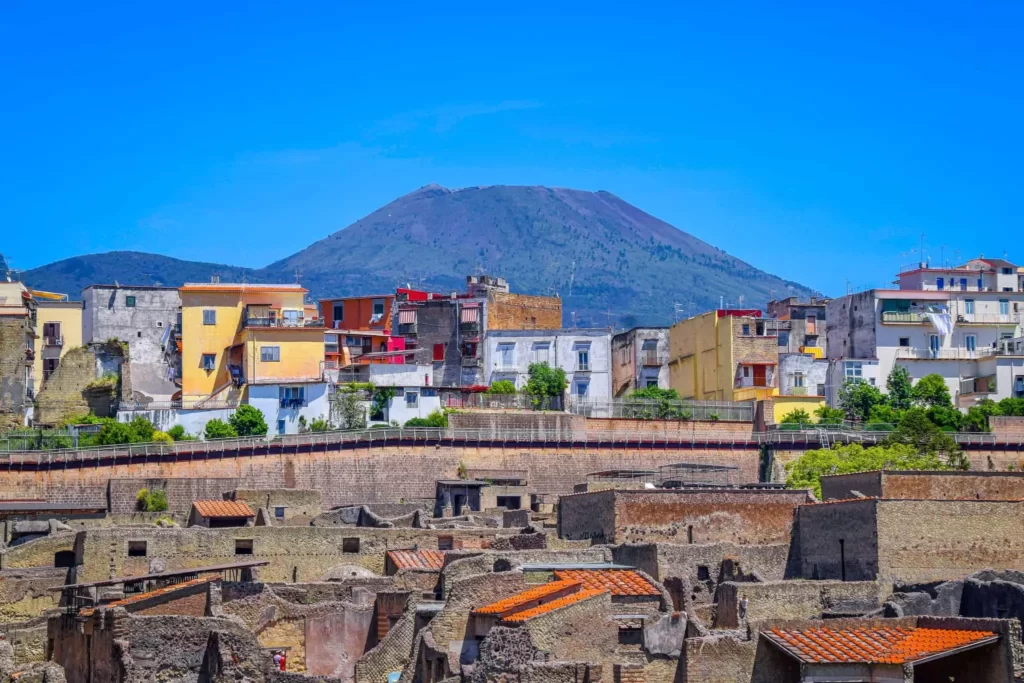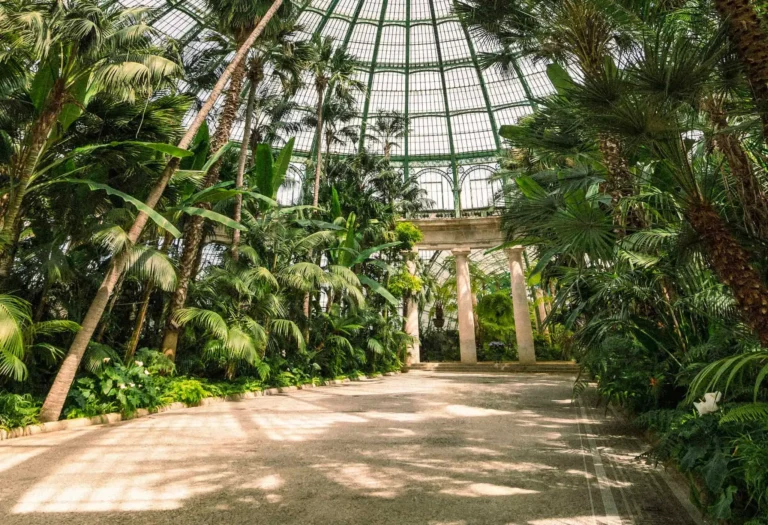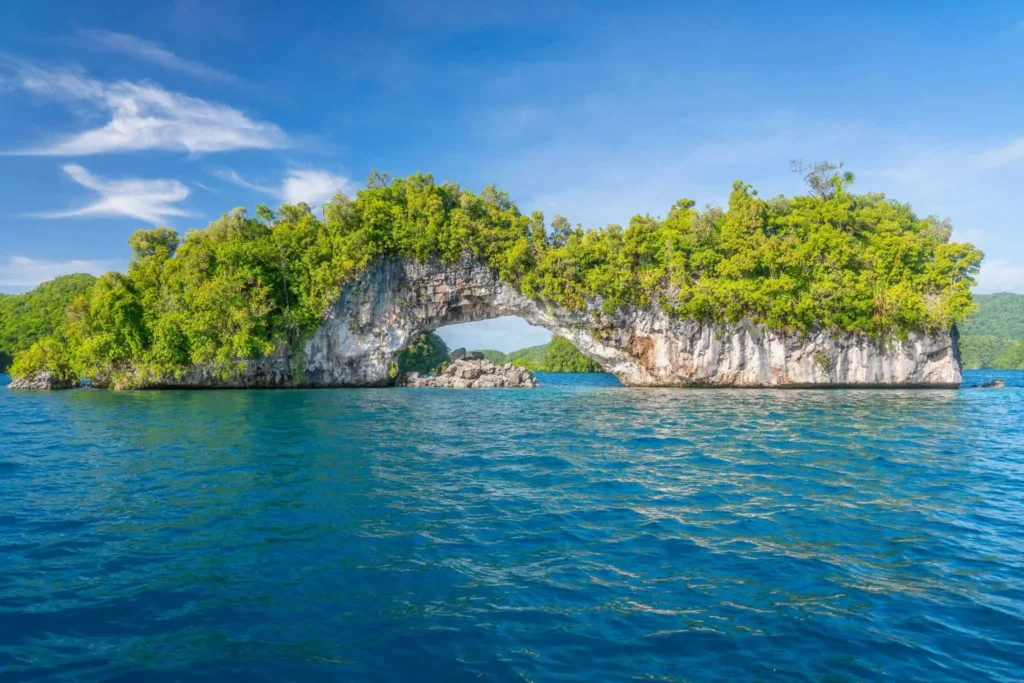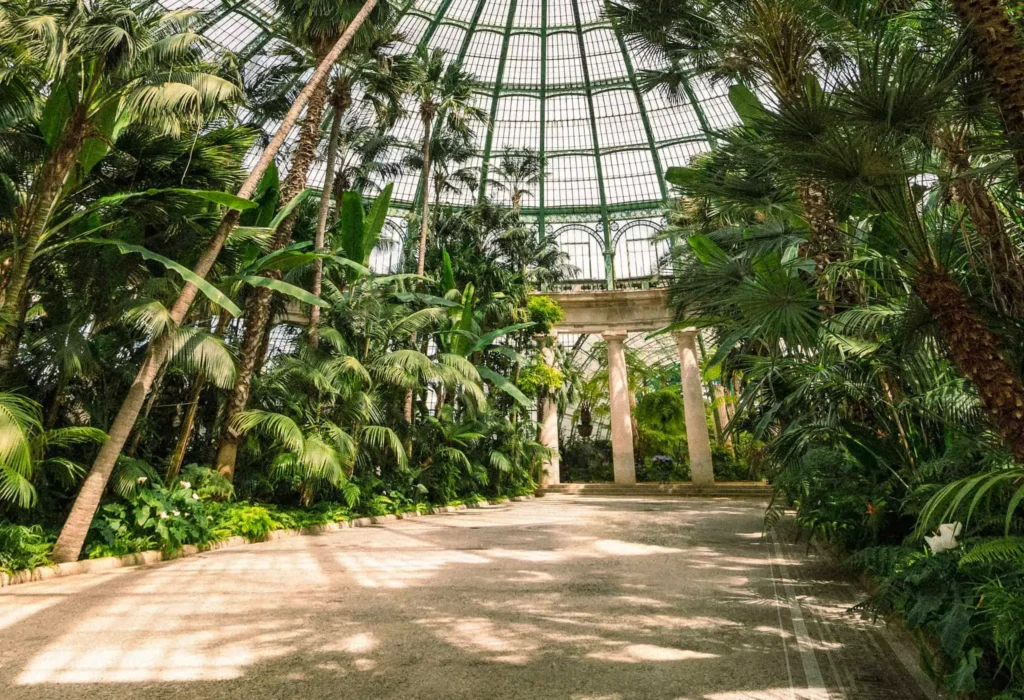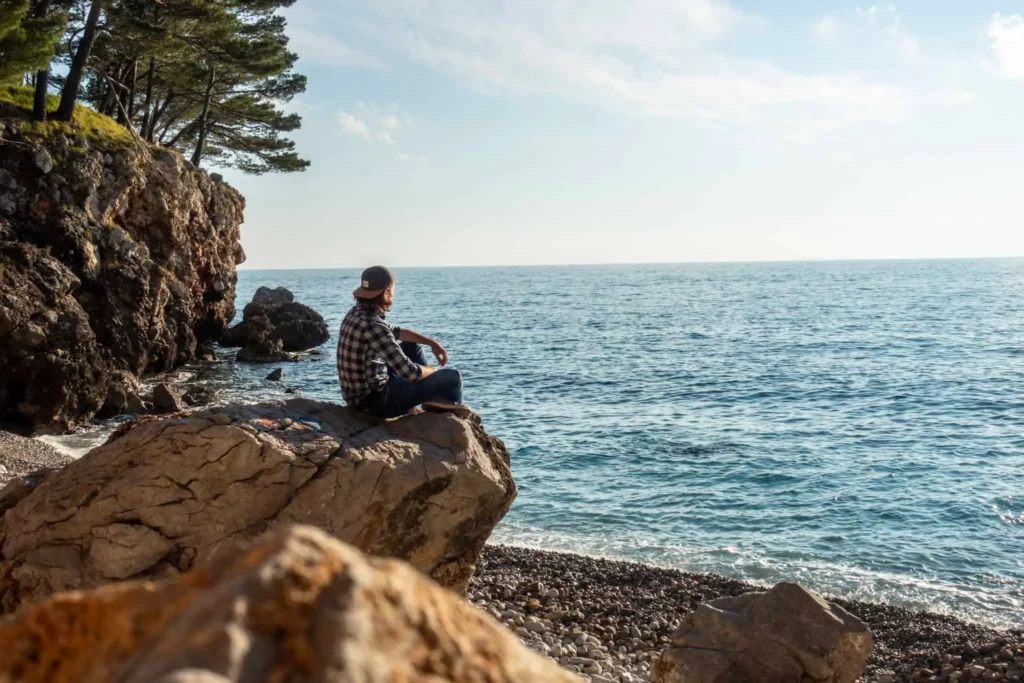| This post may contain affiliate links. Whenever you book or buy something through one of these, Giving Getaway gets a small commission, of which 100% will be donated to charity, without any extra cost to you! |
Nestled at the foot of Mount Vesuvius, Pompeii and Herculaneum once were thriving centers of culture and civilization until that fateful day in 79 AD. The eruption of Mount Vesuvius buried these cities under layers of ash and pumice, preserving them in a state of suspended animation for centuries.
Forgotten and hidden from the world, these cities were eventually rediscovered, revealing a snapshot of life in ancient Rome. In this post, I would like to delve a bit deeper into the mysteries and tragedies that unfolded in these once-bustling cities and discover the impact they have had on our understanding of the past.
By the way, if you are already planning a trip to Pompeii and/or Herculaneum, feel free to click on the ads and affiliate links and use the search widgets you can find in this post to plan and book your trip. It won’t cost you a thing extra, but I will earn a commission of which I’ll be giving away 50% of that commission to charity.
And now let’s take a closer look at the tragic History of Pompeii and Herculaneum!
Key Takeaways
- Pompeii and Herculaneum were thriving centers of commerce and culture with extensive road networks and sophisticated water supply systems.
- The catastrophic eruption of Mount Vesuvius in 79 AD buried Pompeii and Herculaneum in volcanic ash, preserving the cities and providing valuable archaeological information.
- Innovative preservation techniques, such as silicone rubber molds and 3D scanning, have been used to preserve the original structures and create precise digital representations of the sites.
- Excavations have revealed well-preserved homes, shops, baths, theaters, frescoes, mosaics, sculptures, and artifacts, offering insights into the daily lives, social structures, aesthetic tastes, and cultural practices of the inhabitants.
Pompeii and Herculaneum Before the Eruption
Pompeii and Herculaneum, two ancient Roman cities located in the Bay of Naples, were thriving centers of commerce and culture during the first century AD. Situated near each other, these cities enjoyed a prosperous existence, thanks to their strategic location and fertile land.
Pompeii, the largest of the two cities, was a bustling metropolis with a population of approximately 20,000 people. It was renowned for its vibrant markets, luxurious villas, and grand public buildings. The city was a hub of activity, with traders from all over the Roman Empire flocking to its bustling streets. Its strategic location near the coast also made it a significant port, facilitating trade and ensuring its economic prosperity.
Herculaneum, though smaller in size, was no less important. It was known for its opulent waterfront villas and its affluent residents. The city was a popular resort destination for the Roman elite, who sought refuge from the heat of the Roman summer in its cool coastal breeze. Herculaneum was also known for its thriving fishing industry, which provided a steady source of income for its inhabitants.
Both cities were characterized by their impressive architecture and urban planning. Pompeii boasts magnificent temples, theaters, and amphitheaters, reflecting the city’s rich cultural heritage. Herculaneum, on the other hand, was celebrated for its well-preserved mosaics and frescoes, showcasing the artistic prowess of its inhabitants.
Little did the residents of these cities know that their lives were about to be forever changed. On that fateful day in 79 AD, Mount Vesuvius, the nearby volcano, erupted with catastrophic force, burying Pompeii and Herculaneum under layers of ash and volcanic debris. The cities were lost to time, preserved in a tragic state of frozen destruction until their eventual rediscovery centuries later.
Mount Vesuvius and the Catastrophic Eruption
One of the most devastating natural disasters in history occurred in 79 AD when Mount Vesuvius erupted, burying the ancient Roman cities of Pompeii and Herculaneum under layers of ash and volcanic debris. This catastrophic event forever changed the landscape and the lives of the people living in these once-vibrant cities.
Mount Vesuvius, located on the west coast of Italy, had been dormant for centuries leading up to the eruption. The inhabitants of Pompeii and Herculaneum were unaware of the impending disaster, as there were no warning signs or previous eruptions to prepare them for what was to come.
On the morning of August 24, 79 AD, Mount Vesuvius erupted with an unimaginable force. The volcano spewed a massive column of ash, pumice, and volcanic gases into the sky, reaching heights of up to 32 kilometers (20 miles). The volcanic material rained down upon the cities, quickly burying them under layers of hot ash and debris.
The eruption was accompanied by intense heat and pyroclastic flows, which are fast-moving currents of hot gas and volcanic matter. These flows engulfed the cities, instantly killing anyone who had not managed to escape. The sheer force and speed of the eruption left no chance for survival, trapping the residents and preserving their final moments in time.
The devastation caused by the eruption of Mount Vesuvius was immense. The cities of Pompeii and Herculaneum were completely buried and forgotten for centuries, lost to the world until their rediscovery and excavation in the 18th century. The tragic fate of these cities serves as a reminder of the power and unpredictability of nature, and the catastrophic consequences that can result from living in the shadow of a volcano.
The Preservation of Pompeii and Herculaneum
After the devastating eruption of Mount Vesuvius in 79 AD, Pompeii and Herculaneum were buried under layers of volcanic ash and debris. This catastrophic event, while tragic in its immediate consequences, inadvertently played a crucial role in the preservation of these ancient Roman cities.
The thick layers of ash that covered the cities acted as a natural shield, protecting the structures and artifacts from decay and destruction. With the absence of air and moisture, the organic materials, such as wood and textiles, were remarkably preserved, providing a unique snapshot of daily life in ancient times.
Centuries passed, and the cities remained hidden beneath the earth until their rediscovery in the 18th century. Excavations began in earnest, and archaeologists were astounded by the remarkable state of preservation. The buildings, streets, and even the intricate frescoes on the walls were remarkably intact, offering a glimpse into the past that was unparalleled.
The painstaking process of uncovering and preserving these sites continues to this day. The fragile nature of the remains requires delicate handling and meticulous documentation. Advanced preservation techniques, such as the use of protective shelters and controlled environments, have been employed to safeguard fragile structures and artifacts from further decay and damage.
In recent years, a renewed focus on conservation and restoration has emerged. Efforts are being made to stabilize the structures and mitigate the effects of natural elements and visitor impact. This includes the installation of modern drainage systems to prevent water damage and the implementation of strict visitor regulations to ensure the long-term preservation of these invaluable archaeological treasures.
Rediscovery and Excavation
After the catastrophic eruption of Mount Vesuvius in 79 AD, the cities of Pompeii and Herculaneum were forgotten for centuries. It wasn’t until the 18th century that these ancient cities were rediscovered and their remarkable preservation revealed.
The first signs of Pompeii’s existence were accidentally discovered in 1599 during the digging of an underground channel. However, it wasn’t until 1748 that serious excavations began under the direction of Charles III, the King of Naples. The excavation efforts were initially focused on Pompeii, as it was the larger and more well-known city. Later, in 1738, excavation work also began in Herculaneum.
The excavation process was slow and labor-intensive, as the cities were buried under more than 20 feet of volcanic debris. The remains of the cities had been remarkably preserved, thanks to the layer of ash that had sealed them off from the destructive forces of time and weather. As the excavation progressed, archaeologists unearthed a wealth of artifacts, including frescoes, mosaics, statues, and everyday objects, providing invaluable insights into the life and society of ancient Pompeii and Herculaneum.
The discoveries made during the excavation of Pompeii and Herculaneum captured the imagination of the public and sparked a widespread interest in ancient history and archaeology. These cities lost in time became symbols of a bygone era, shedding light on the daily lives of ancient Romans and their cultural practices.
Today, the sites of Pompeii and Herculaneum continue to be excavated and studied, revealing new information about the ancient world. Efforts are also being made to preserve and protect these archaeological treasures for future generations. The tragic history of Pompeii and Herculaneum serves as a reminder of the fragility of human civilization and the power of nature.
Life and Society in Ancient Pompeii
Ancient Pompeii was a bustling city with a vibrant and diverse society. It was a melting pot of different cultures, as it was a major port city and attracted people from all over the Roman Empire. The city was home to a wide range of social classes, from wealthy aristocrats to slaves and freedmen.
One of the most fascinating aspects of life in Pompeii was the social structure. At the top of the hierarchy were the wealthy elite, who lived in luxurious villas and enjoyed a life of leisure. They were the ones who owned the grand houses, the beautiful gardens, and the impressive works of art that adorned the city.
Below the elite was the middle class, which consisted of merchants, shopkeepers, and artisans. They played a vital role in the city’s economy and were responsible for the trade and commerce that thrived in Pompeii. They lived in smaller houses but still enjoyed a comfortable lifestyle.
At the bottom of the social ladder were the slaves and freedmen. Slavery was a common practice in ancient Rome, and Pompeii was no exception. Slaves were considered property and were owned by the wealthy elite. They performed various tasks, such as household chores, farming, and manual labor.
Despite the social divisions, Pompeii was a remarkably egalitarian society. The city had a strong sense of community, and people from different social classes often mingled together. Public spaces, such as the forum and the baths, were places where people would gather and socialize, regardless of their social status.
In terms of daily life, Pompeii was a bustling and lively city. The streets were filled with merchants selling their wares, and the markets were bustling with activity. The city had a vibrant food scene, with numerous taverns and restaurants offering a variety of cuisines. Entertainment was also a significant part of life in Pompeii, with theaters, amphitheaters, and gladiatorial games providing entertainment for the masses.
Herculaneum: The Lesser-Known City
While Pompeii often steals the spotlight when it comes to discussing the ancient cities destroyed by the eruption of Mount Vesuvius, it is important not to overlook Herculaneum. Situated just a few miles northwest of Pompeii, Herculaneum was a thriving coastal town in the Campania region of Italy.
Herculaneum shared a similar fate to Pompeii when Mount Vesuvius erupted in 79 AD. However, the impact on Herculaneum was quite different. Unlike Pompeii, which was buried under layers of ash and pumice, Herculaneum was engulfed by a pyroclastic flow. This mixture of hot gases, ash, and volcanic debris rapidly flowed down the sides of the volcano, encapsulating the city under a thick layer of hardened volcanic material.
The unique way in which Herculaneum was preserved provides valuable insights into ancient Roman life. The pyroclastic material that covered the city acted as a protective shield, preventing the buildings and their contents from being destroyed by the passage of time. As a result, Herculaneum offers a more intimate and detailed glimpse into the daily lives of its inhabitants.
The excavation of Herculaneum began in the 18th century, but progress has been slower compared to Pompeii due to the challenging nature of the site. The volcanic material that covered the city hardened into a dense rock-like substance known as tuff, making the excavation process more complex and time-consuming.
Despite its lesser-known status, Herculaneum is a treasure trove of well-preserved architecture, artwork, and everyday objects. The luxurious villas, intricate mosaics, and elaborate frescoes found within its walls provide a fascinating insight into the wealth and sophistication of the city’s residents.
While Pompeii may be more famous, Herculaneum offers a unique and equally important perspective on life in ancient Roman times. Its well-preserved ruins continue to captivate archaeologists and visitors alike, shedding light on the tragic events that unfolded almost two millennia ago.
Legacy and Influence
The tragic history of Pompeii and Herculaneum has left a lasting impact on our understanding of ancient civilizations and natural disasters. The preservation of these cities, despite their destruction, has provided valuable insight into the daily life and society of the ancient Romans.
One of the most significant legacies of Pompeii and Herculaneum is the preservation of their architecture and art. The eruption of Mount Vesuvius in 79 AD buried the cities under layers of ash and pumice, effectively freezing them in time. As a result, archaeologists have been able to uncover remarkably well-preserved buildings, frescoes, and even human remains. These discoveries have allowed historians to reconstruct the layout and aesthetics of ancient Roman cities, providing a tangible link to the past.
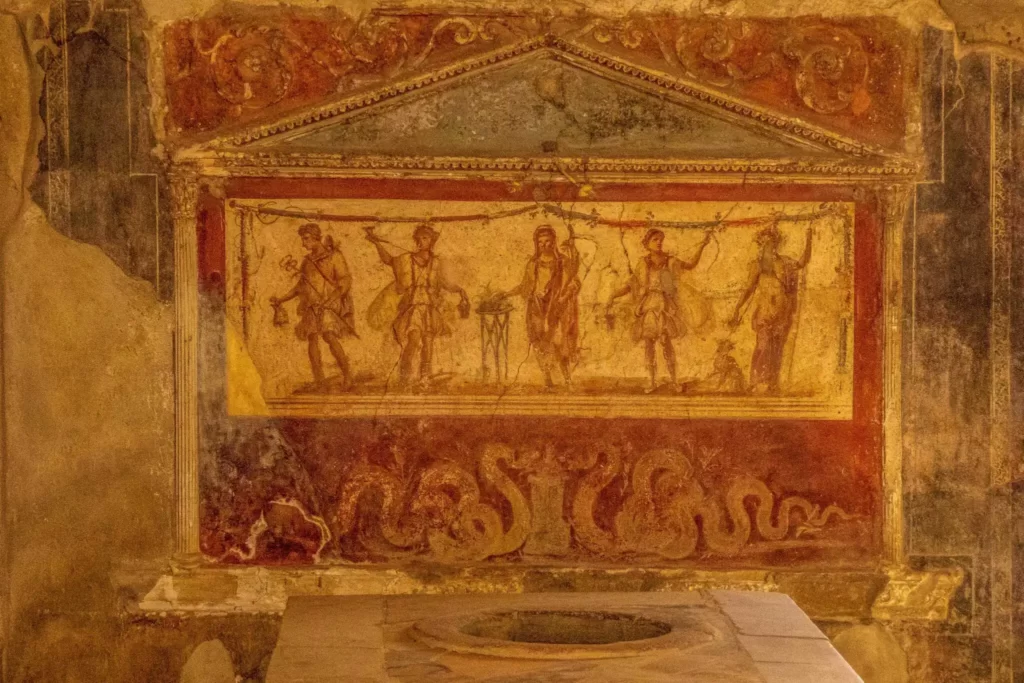
Furthermore, the excavation and study of Pompeii and Herculaneum have greatly contributed to our knowledge of ancient Roman society. The preserved buildings have revealed valuable information about the daily lives of the inhabitants, including their social structure, religious practices, and economic activities. From the remains of public baths and amphitheaters to the intricate artwork found in private homes, these cities have provided a comprehensive picture of life in the Roman Empire.
The tragic fate of Pompeii and Herculaneum has also served as a stark reminder of the power of nature and the vulnerability of human civilization. The catastrophic eruption of Mount Vesuvius serves as a cautionary tale, highlighting the importance of disaster preparedness and the potential consequences of living near active volcanoes.
Today, the legacy of Pompeii and Herculaneum continues to influence various fields, including archaeology, art history, and urban planning. The meticulous preservation and ongoing conservation efforts of these sites ensure that future generations can continue to study and appreciate the rich history they hold.
Modern Preservation and Conservation of Pompeii and Herculaneum
In the modern era, efforts have been made to preserve and conserve the ancient cities of Pompeii and Herculaneum. Recognizing the historical and cultural significance of these sites, various organizations and government bodies have implemented measures to ensure their protection and longevity.
One of the key initiatives in modern preservation and conservation is the establishment of the Archaeological Park of Pompeii and the Archaeological Park of Herculaneum. These parks serve as guardians of the ancient cities, providing a controlled environment for visitors to explore and learn about their rich history. Strict regulations are in place to prevent any further damage to the fragile ruins, such as limiting the number of visitors and enforcing guidelines for preservation.
To aid in the preservation efforts, advanced technologies are being employed. Laser scanning and digital mapping techniques have been utilized to create detailed three-dimensional models of the sites. These models not only assist in the documentation and analysis of the ruins but also aid in the restoration and reconstruction of the damaged areas.
Furthermore, ongoing conservation projects focus on stabilizing the structures and protecting them from natural elements. Specialized teams of archaeologists, architects, and engineers work tirelessly to reinforce fragile walls, roofs, and structures. The use of modern materials that mimic the original construction techniques ensures that the interventions are minimal and do not compromise the authenticity of the sites.
Education and awareness are also paramount in the preservation and conservation efforts. Visitor centers and museums within the parks provide informative exhibits and displays, offering visitors a deeper understanding of the history and significance of Pompeii and Herculaneum. Educational programs and guided tours further contribute to raising awareness about the importance of preserving these cities for future generations.
Conclusion
The tragic history of Pompeii and Herculaneum serves as a testament to the devastating power of natural disasters. The eruption of Mount Vesuvius in 79 AD resulted in the preservation of these ancient cities, providing valuable insights into the life and society of the time.
The rediscovery and ongoing excavation of Pompeii and Herculaneum have allowed for a greater understanding of the ancient Roman world. Today, these cities continue to be important archaeological sites that contribute to our knowledge of the past.
If you are now planning to explore Pompeii and Herculaneum yourself, I invite you to book your hotel, flight, rental car, and other travel essentials with Giving Getaway.
Every completed booking earns Giving Getaway a commission, 50% of which will be used to organize charity events like the 2021 Christmas gift drive for kids and teenagers in a children’s home in Montenegro. Start planning your trip now and make a difference with Giving Getaway!








